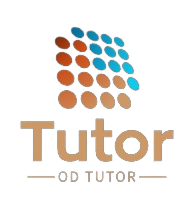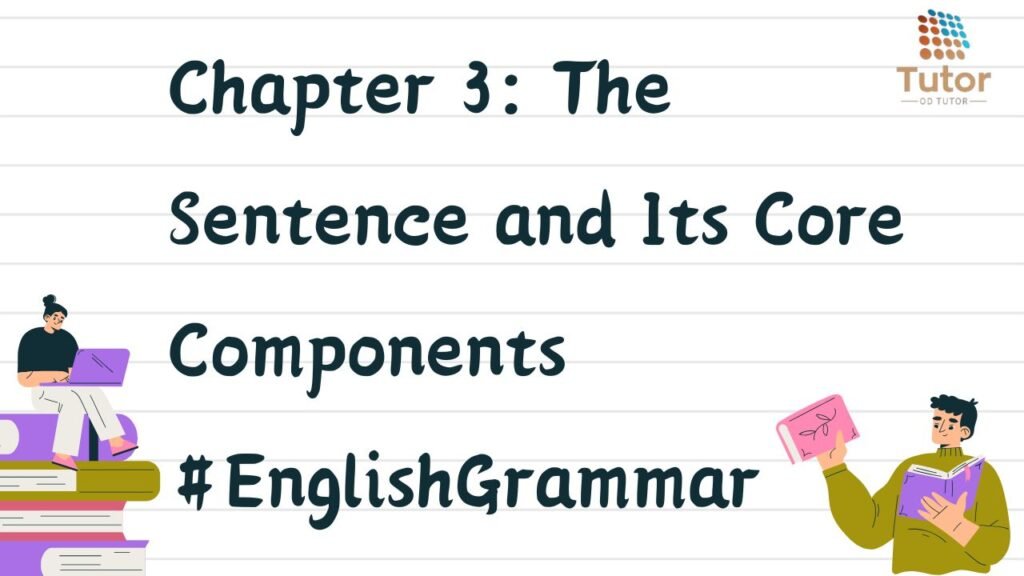This chapter acts as the crucial bridge between identifying individual words (the “bricks” of language) and understanding how they work together to create meaning (the “walls” and “rooms”).
After learning about nouns, verbs, adjectives, etc., students naturally ask: “How do I put these together to form a correct and complete thought?” This chapter answers that question.
Why This Chapter is Next: The Logical Progression
- From Words to Structure: You’ve given the students the raw materials. Now you show them the blueprint for assembling them.
- Foundation for All Future Topics: Every subsequent topic—tenses, clauses, voice, punctuation—relies on the ability to identify the subject and verb of a sentence. A student who cannot reliably find the subject will struggle with subject-verb agreement. A student who doesn’t understand what makes a sentence complete will struggle with fragments and run-ons.
- Builds Directly on Chapter 2: This chapter uses the terminology just learned. You’ll be talking about how Nouns often function as Subjects and Verbs function as Predicates.
Proposed Content for Chapter 3: The Sentence and Its Core Components
Here’s a detailed breakdown of what this chapter would cover.
1. What is a Sentence?
- Definition: A sentence is a group of words that expresses a complete thought. It contains a subject and a predicate.
- Concept of Completeness: Contrast a complete thought with a fragment.
- Complete Thought (Sentence): The dog barked. / It is raining.
- Incomplete Thought (Fragment): The large, fluffy dog. / After the party ended.
2. The Two Essential Parts of Every Sentence
Explain that every single complete sentence in English can be divided into these two parts.
A. The Subject
- Definition: The who or what the sentence is about. It is the person, place, thing, or idea that is doing or being something.
- How to Find It: Ask “Who?” or “What?” in front of the verb.
- Types:
- Simple Subject: The main noun or pronoun alone.
- Example: The tall, mysterious stranger left quickly. (Simple Subject: stranger)
- Complete Subject: The simple subject and all the words that modify it.
- Example: The tall, mysterious stranger left quickly. (Complete Subject: The tall, mysterious stranger)
- Simple Subject: The main noun or pronoun alone.
B. The Predicate
- Definition: The part of the sentence that tells something about the subject. It contains the verb and all the words that complete its meaning.
- How to Find It: Everything in the sentence that is not part of the complete subject.
- Types:
- Simple Predicate: The verb or verb phrase alone.
- Example: The students have been studying for hours. (Simple Predicate: have been studying)
- Complete Predicate: The verb and all its modifiers, objects, and complements.
- Example: The students have been studying for their final exams for hours. (Complete Predicate: have been studying for their final exams for hours)
- Simple Predicate: The verb or verb phrase alone.
3. The Four Core Sentence Structures
Introduce the basic formulas that create the vast majority of English sentences. This is where the parts of speech become functional.
- Formula 1: Subject + Verb (S-V)
- The simplest form. The verb is often intransitive (it doesn’t need an object).
- Examples:
- Birds fly.
- The sun rose.
- Everyone laughed.
- Formula 2: Subject + Verb + Direct Object (S-V-DO)
- The verb is a transitive action verb. The Direct Object is the noun/pronoun that receives the action of the verb. Ask “Subject verbed what?”
- Examples:
- The chef prepared the meal. (Prepared what? The meal.)
- She loves music. (Loves what? Music.)
- Formula 3: Subject + Verb + Indirect Object + Direct Object (S-V-IO-DO)
- The verb is transitive. The Indirect Object is the noun/pronoun that receives the direct object or for whom/what the action is done. It comes before the direct object.
- Examples:
- He gave his sister a gift. (Gave to whom? His sister. Gave what? A gift.)
- The company paid the employees their salaries. (Paid to whom? The employees. Paid what? Salaries.)
- Formula 4: Subject + Linking Verb + Subject Complement (S-LV-SC)
- The verb is a linking verb (is, seem, become, feel, etc.). The Subject Complement is a noun or adjective that renames or describes the subject.
- Noun Complement (Predicate Nominative):
- She is the manager. (“Manager” renames “she.”)
- Adjective Complement (Predicate Adjective):
- This soup tastes delicious. (“Delicious” describes “soup.”)
4. Common Errors to Avoid
- Sentence Fragments: Incomplete sentences pretending to be complete. They are often missing a subject or a verb.
- Fragment: Running down the street. (Who was running? This is just a subject-less predicate.)
- Corrected: The dog was running down the street.
- Run-on Sentences: Two or more independent clauses joined incorrectly without proper punctuation or a conjunction.
- Run-on: I love reading it helps me relax.
- Corrected: I love reading; it helps me relax. / I love reading because it helps me relax.
This chapter provides the critical structural understanding that allows students to confidently build and deconstruct any sentence they encounter, making it the undeniable and essential next step after learning the Parts of Speech.

